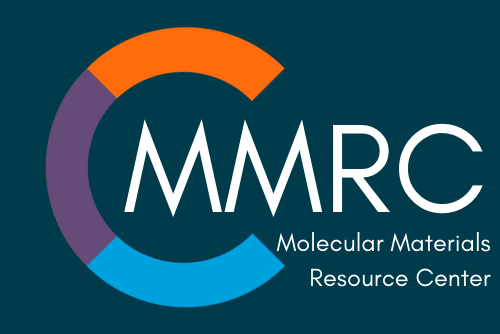 |
Welcome to the MMRC Workshop on Atomic Force Microscopy presented with Bruker Corp. |

|
 |
 |
|
 |
January 28-29, 2016; at Caltech's Beckman Institute
Registration Closed
The Molecular Materials Research Center (MMRC) of the Beckman Institute of the California Institute of Technology in collaboration with Bruker Nano, is proud to announce a two day electrical/mechanical Properties AFM training workshop using the Dimension Icon AFM.
The workshop will focus on quantitative electrical characterization techniques such as conductivity and current mapping; scanning capacitance microscopy; Kelvin Probe mapping; and quantitative Nanoscale mechanical Characterization. The workshop includes both theory and Laboratory sessions. Special topics of "Introductions to Biological AFM" and "Scanning Microwave Capacitance Microscopy" will also be presented
The MMRC has four scanning probe instruments a Bruker Dimension Icon AFM, a Bruker MultiMode 8 AFM, a EC-STM and an Asylum MFP3D-Bio.
Schedule
Thrusday Jan 28
| Times | Talks |
|---|---|
| 9:30 - 9:45 am | MMRC Overview – Bruce Brunschwig |
| 9:45 - 10:30 am | AFM-based Peak Force Nano Mechanical and Nano Electrical Imaging for Materials Research and Devices Character -I—Dr. Teddy Huang |
| 10:30 - 10:45 am | Coffee Break |
| 10:45 - 11:30 | AFM-based Peak Force Nano Mechanical and Nano Electrical Imaging for Materials Research and Devices Characterization -II —Dr. Teddy Huang |
| 11:30 - 12:15 | AFM System Overview; Conductive AFM+QNM—Dr. Senli Guo |
| 12:15 - 1PM - | Lunch w/Recent Advances in Atomic Force Microscopy for Biological Research—Dr. Senli Guo |
| Workshop | |
| 1PM - 5PM | Hands-On Demonstrations - Conductive AFM modes—Lab |
| Users interested in doing Hands-On work, should contact me beforehand to arrange for a timeslot |
Friday Jan 29
| Times | Talks |
|---|---|
| 10am - 11am | AFM based Surface Potential and Carrier Profiling AFM (PF KPFM and SCM/SSRM)—Dr. Senli Guo |
| 11am -12PM | AFM System Overview; PF-KPFM—Dr. Senli Guo |
| 12PM - 1PM | Lunch w/Scanning Microwave Impedance Microscopy: A Near Field Optical Technique for Nano Electrical Imaging—Dr. Teddy Huang |
| Workshop | |
| 1PM - 5PM | Hands-On Demonstrations - Conductive AFM modes—Lab |
| Users interested in doing Hands-On work, should contact me beforehand to arrange for a timeslot |
AFM-based electrical characterization methods can be routinely applied in the study of nano-electronic materials and devices. The workshop will give an overview of this family of AFM modes and discuss the best methods to measure conductivity, surface potential, carrier profiles, piezo-electric and other electrical properties with nanometer scale resolution. Also an overview of the nanomechanical mapping mode PF-QNM will be considered. Each operating mode will be illustrated with examples from Si-based and compound semiconductors, carbon-based materials (e.g.: nanotubes, graphene) and organic devices.
Thursday will focus on conductivity and mapping of the nanoconductivity of materials using PF_TUNA and C-AFM (conductive). PF-TUNA and C-AFM are current sensing techniques. They can be used to probe the conductivity of both hard and fragile samples such as organic photovoltaics, conductive nanotubes, and nanoparticles. Peak Force AFM has made much longer tip lifetime possible and also allow measurements on samples, previously not accessible with contact-based methods. Other improvements focus on environmental and the elimination of the effect of the AFM laser light (eliminate light-induced artifacts).
Friday will focus on surface potential and Carrier Prfiling using AFM. Kelvin probe force microscopy (KPFM), or surface potential microscopy, has found broad applications, in corrosion studies of alloys, photovoltaic effects on solar cells, and surface analysis. KPFM, is among the most used nanoscale electrical characterization tools, and complements the use on conductance AFM. The marriage of frequency modulation KPFM (FM-KPFM) with PeakForce Tapping has increased the spatial resolution and accuracy possible. FM-KPFM can be used with PF-QNM to deliver simultaneous, highly correlated nanoscale topography, electrical and mechanical property mapping on a wide range of samples.
Scanning Capacitance Microscopy (SCM) provides a method for direct measurement of activated carrier concentration on the nanometer scale in two dimensions. SCM is derived from Contact Mode and measures changes in capacitance between the tip and the sample surface using an extremely sensitive high-frequency resonant circuit.
CONTACTS
Bruce Brunschwig, Caltech, email: bsb at Caltech.eduDrew Griffin Bruker, email: Drew.Griffin at bruker.com
Lunch Break - Lunch will be provided for RSVP attendees
Hands-on Demonstrations of the Dimension Icon AFM, Beckman Institute room B219.
